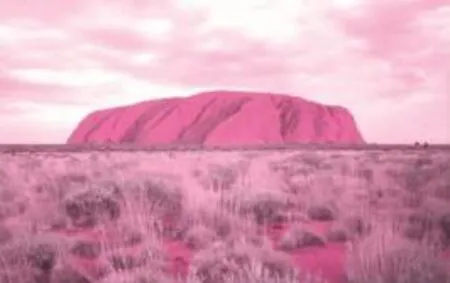Jennifer Lopez
导读:澳大利亚乌卢鲁卡塔丘塔国家公园的董事会一致投票通过,将于2019年开始禁止游客攀登乌卢鲁,还原土着人的神圣领地。

Climbing on Australia’s iconic Uluru landmark will be banned from October 2019,local authorities have confirmed.
The board of the Uluru-Kata Tjuta National Park voted unanimously to end the climb because of indigenous sensitivities.
The giant red monolith in the Northern Territory is a sacred site for Aboriginal Australians.
Local people have long asked visitors not to climb the outcrop,which was known for many years as Ayers Rock.
Signs at the start of the climb ask people to abstain from going up in respect to the traditional law of the Anangu Aboriginal people,the custodians of the land.
“It is an extremely important place,not a playground or theme park like Disneyland,”board chairman and Anangu man Sammy Wilson said on Wednesday.
He said the Anangu people had felt intimidation over the years to keep the climb open because it was a top tourist attraction.
However,the group had consistently wanted to close the site,a sacred men’s area,because of its cultural significance.
The board was made up of eight traditional owners as well as four government officials.
Only 16%of visitors made the climb between 2011 to 2015,according to the board’s data.
The Unesco World Heritage-listed monolith was handed back to its traditional owners in 1985.The ban will commence on 26 October,2019—the 34th anniversary of the handover.
Tourism Central Australia said it supported the decision,pointing out that the public could still access much of the site respectfully.
However,not all have supported the idea of a ban.
Last year,Northern Territory Chief Minister Adam Giles sparked debate when he described the suggestion as “ludicrous”.
“We should explore the idea of creating a climb with stringent safety conditions and rules enforcing spiritual respect,”said Mr Giles,who is Aboriginal.
However,weather and safety concerns have also led to the climb being frequently closed over the past 12 months.Since the 1950s,at least 35 people have died on the trek.
This recent push for the climb’s ban was outlined in the park's 2010~2020 management plan,where it was proposed the climb be closed if attendance numbers dropped under 20%and other visitor activities were successfully established.
More than 250,000 people visit Uluru each year,according to the national park's website.
澳大利亚地方当局已经确认,2019年10月开始,标志性的乌卢鲁地标将禁止被攀登。
因为土着居民对此敏感,乌卢鲁卡塔丘塔国家公园的董事会一致投票结束攀登。
北方领地的红色巨石是澳大利亚土着居民的神圣地标。
长期以来,当地人纷纷要求游客不要攀登这个多年被称为艾尔斯岩的凸起巨石。
攀登开始时的标识提示人们不要攀登,因为这违反阿南古土着人的传统法律,阿南古人是这片土地的守护者。
董事会主席兼阿南古人威尔逊周三表示:“这是非常重要的地方,而不是迪士尼乐园的游乐场或主题公园。”
他说,过去多年来,这是一个顶级的旅游景点,允许攀登,阿南古人因此受到恐吓。
然而,由于其文化意义,该部落一直希望关闭该景区——一个神圣的人类区域。
董事会由八名传统业主和四名政府官员组成。
根据董事会的数据,2011到2015年间,只有16%的游客攀登了该地区。
该联合国教科文组织世界遗产名录下的巨石在1985年被转交给其传统业主。禁令将于2019年10月26日,即交接34周年开始生效。
澳大利亚中部旅游局表示支持这项决定,指出公众仍然可以进入大部分地点。
但是,并不是所有人都支持禁令的想法。
去年,北方领地首席部长亚历克斯·吉尔斯将这个建议描述为“荒唐可笑”后,引发了争议。
身为土着居民的吉尔斯说:“我们应该探索创造一个具有严格的安全条件和执行精神尊重规则的想法。”
然而,天气和安全方面的担忧也导致过去12个月来该地区经常关闭。自20世纪50年代以来,至少有35人在此死于徒步旅行。
公园2010~2020年度管理计划中概述了攀登禁令的最新进展,如果参加人数下降了20%以上,且其他游客活动成功建立,建议关闭攀登。
根据澳大利亚国家公园网站的数据,每年有超过25万人访问乌卢鲁。



